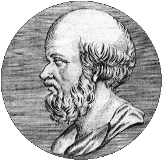Meter

The meter (m) is the unit of length (l). The name is derived from the Greek word metron (μέτρον), meaning "measure".
The meter is defined as the length of the path travelled by light in a vacuum in 1/299,792,458 of a second, where the second is defined in terms of the atomic clock.
History
Around 240 BC, the Greek scholar Eratosthenes of Cyrene determined the circumference of the earth to be about 250,000 stadia. The length of a Greek stadion (στάδιον) was probably between 0.15 and 0.21 meters. This makes the circumference of the earth 45,000±7,500 km.
In 1791, the French Academy of Sciences defined the meter by fixing the earth's circumference at 40,000 km. According to current understanding, the average circumference of the earth is 40,030 km.
The Italian mathematician Tito Livio Burattini (1617 – 1681) was the first to introduce the concept of meter (metro cattolico), which he defined as the length of a pendulum with a half-period of 1 second.
Related concepts
| Last modified: | 07 April 2024 9.06 p.m. |
